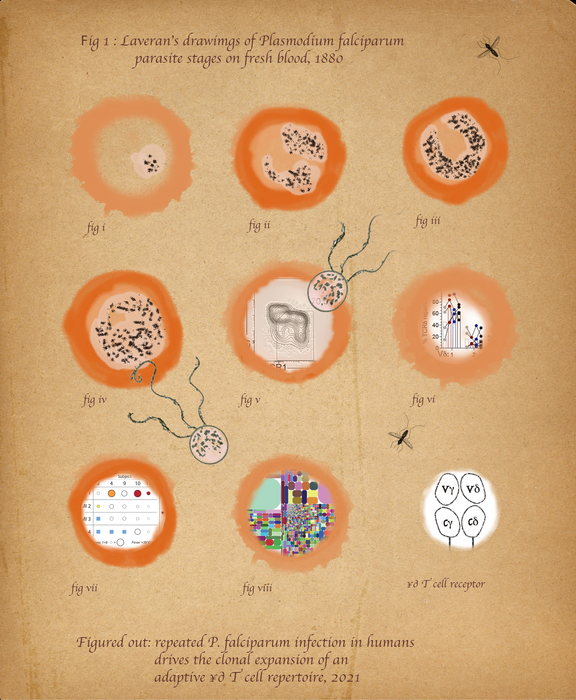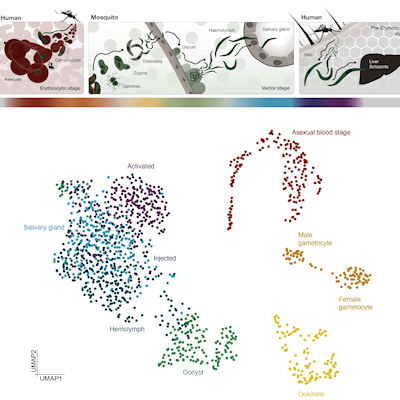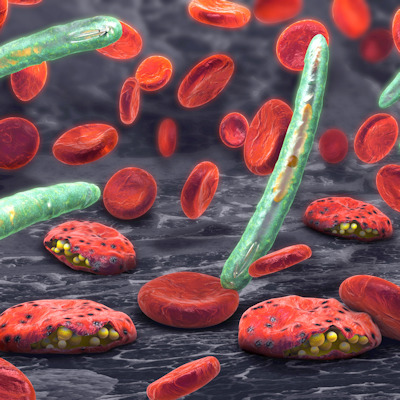December 3, 2021 -- Scientists have shown how a poorly understood group of immune cells -- gamma delta T cells -- are directly involved in immunity to malaria, according to research published December 1 in Science Translational Medicine. The results promise to spur the future development of next-generation malaria vaccines.
Gamma delta T cells are T cells that have a distinctive T-cell receptor (TCR) made up of two glycoprotein chains -- gamma and delta -- on their surface. This feature sets them apart from most T cells that have TCRs composed of alpha and beta TCR chains.
"Our findings that gamma delta T cells are an important component of an effective immune response to malaria will be very important for the development of future vaccines," Anouk von Borstel, PhD, first author and a postdoctoral researcher at Monash University, said in a statement.
The researchers discovered how the gamma delta T cells' unique TCR differentiates in order to recognize fragments of the deadly parasite Plasmodium falciparum, the species responsible for the most prevalent form of malaria in humans.
"These cells have long been thought to be involved in immunity to malaria, but their potential role and how they do this has not been elucidated," said co-author Martin Davey, PhD, of the Monash Biomedicine Discovery Institute at Monash University in Australia.
It has long been known that repeated infections with P. falciparum can induce protective immunity against malaria, but the mechanisms underlying this protection were not well understood.
In the paper, the researchers investigated adults and children in a malaria-endemic region of Mali who had experienced naturally occurring infection with P. falciparum, as well as a cohort of U.S. adults who became clinically immune to malaria after being administered serial controlled human malaria infection in the laboratory. By analyzing their blood samples, the scientists were able to obtain a detailed map of how gamma delta T cells and the gamma delta TCR evolved after repeated infection.

They focused on a specific subset of gamma delta T cells called Vδ+ cells that had previously been found in large quantities in both children and adults with symptomatic P. falciparum infection and in individuals residing in regions of malaria transmission.
Through longitudinal analysis of the blood samples, researchers found that repeated infections drove diverse waves of clonal TCR selection that triggered the differentiation of Vδ+ T cells from a naïve phenotype found in individuals who had not been exposed to malaria into a distinct cytotoxic effector subset, which became the dominant population in individuals with immunity. The researchers showed that this effector subset was able to react to P. falciparum blood-stage parasites in vitro, suggesting that it is the key to malaria immunity.
"Gamma delta T cells are not very well understood and our findings show that the gamma delta TCR is critical to their response to malaria which will open new areas to harness these cells for infectious diseases," von Borstel said.
Efforts to develop an effective vaccine against malaria, the most common severe infectious disease in the world today, have been restricted by a lack of understanding of the immune response that drives immunity. There is currently only one approved vaccine against malaria, known by the brand name Mosquirix, but it offers only modest efficacy and requires a series of four injections.
The research team emphasized the need for future work to further explore the role of gamma delta T cells and TCRs against malaria.
"Our study suggests the importance of future studies exploring the role of the γδ [gamma delta] T cell repertoire in contributing to the establishment of clinical immunity to malaria," the authors wrote.
Do you have a unique perspective on your research related to immunology or infectious diseases? Contact the editor today to learn more.
Copyright © 2021 scienceboard.net









